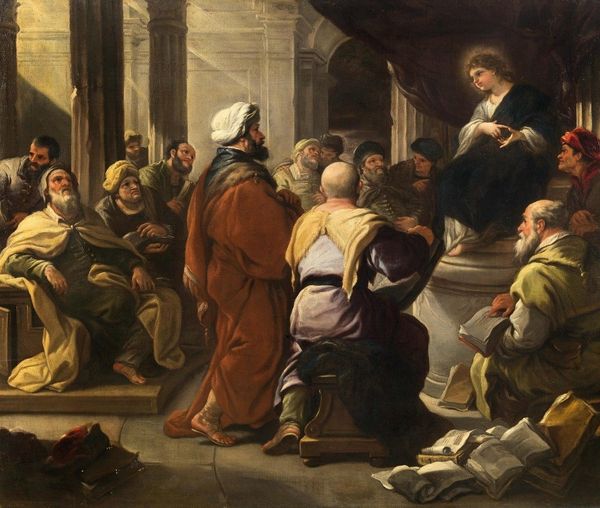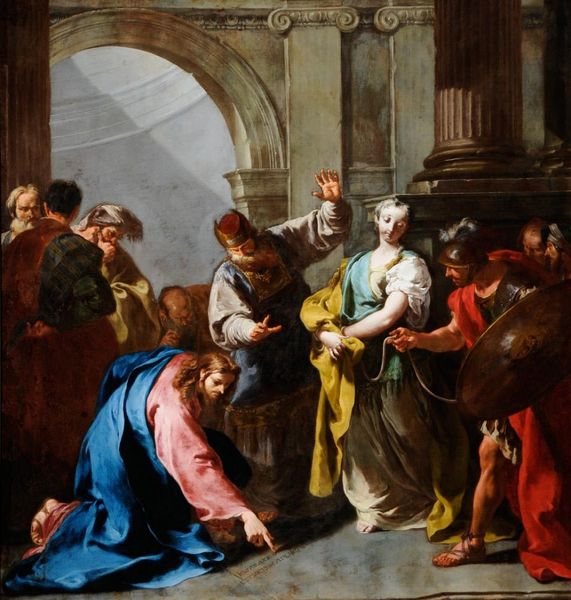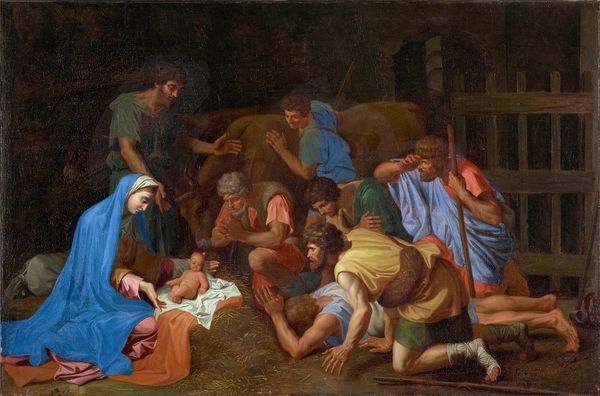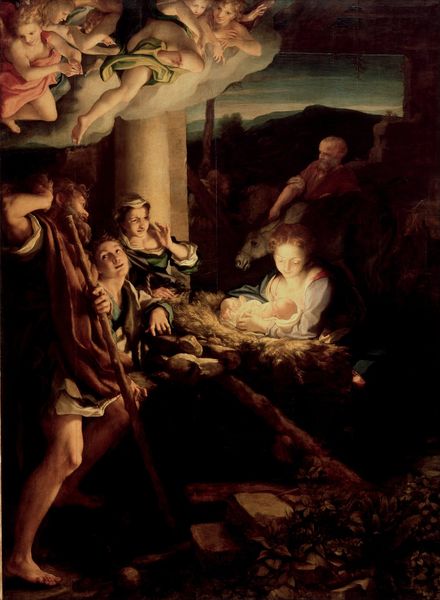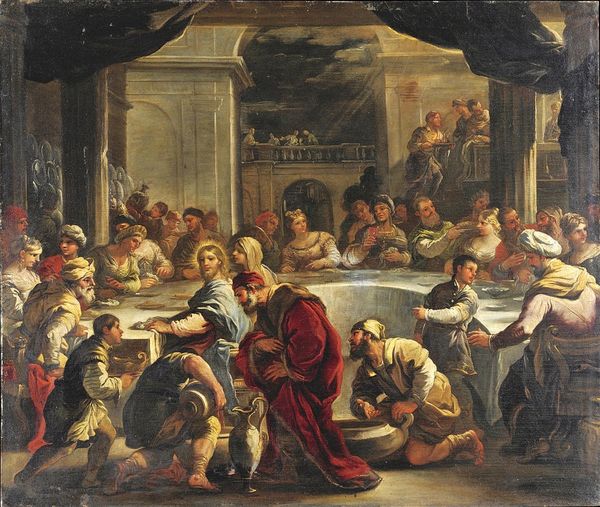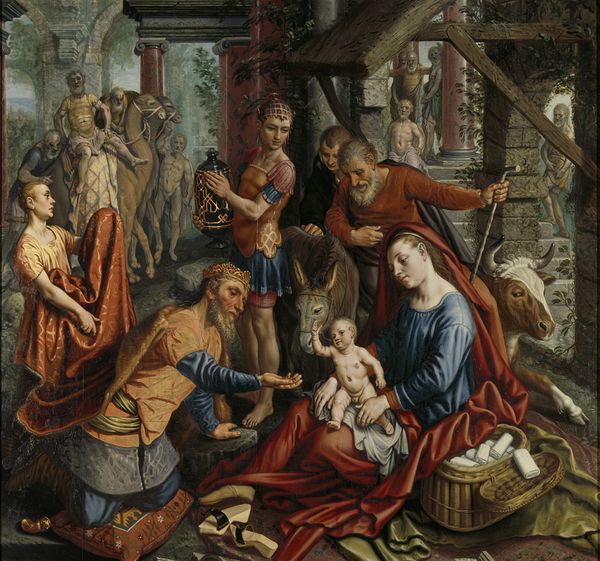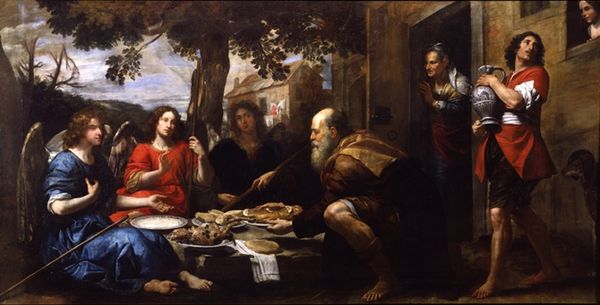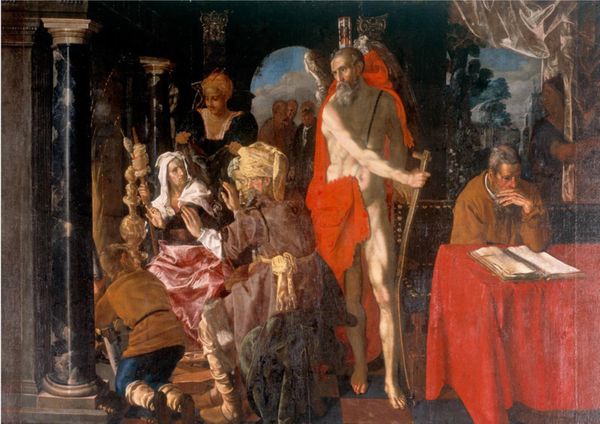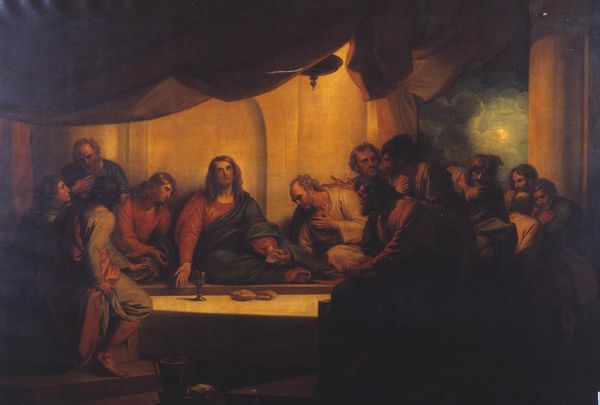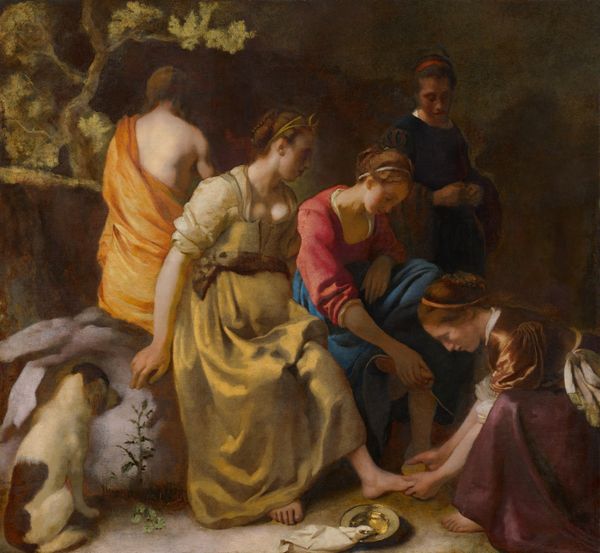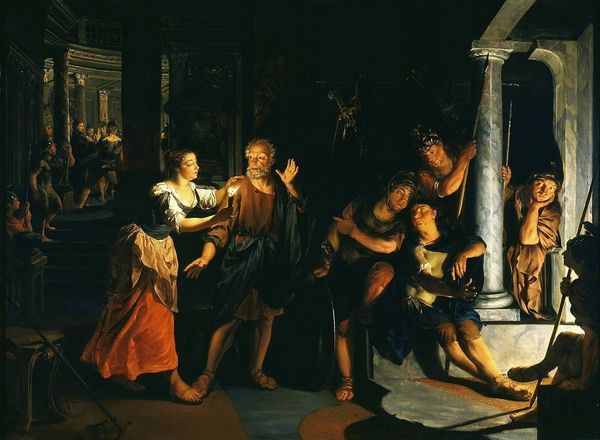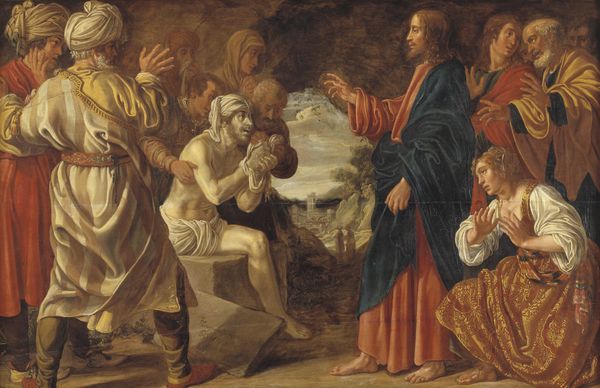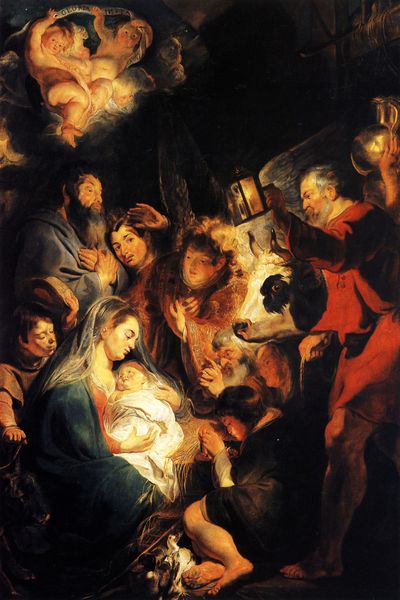
oil-paint
#
baroque
#
oil-paint
#
oil painting
#
group-portraits
#
history-painting
Copyright: Public Domain: Artvee
Editor: Here we have Abraham Bloemaert’s "The Four Evangelists," painted in oil sometime between 1612 and 1615. There's such a sense of serious intellectual labor here, but it’s also very crowded with figures and symbols. What do you see in this piece, particularly in the context of its time? Curator: Bloemaert’s baroque painting throws us into a period grappling with religious reformations. I see this gathering not merely as a depiction of holy figures, but as an assertion of religious authority and intellectual endeavor against the backdrop of theological disputes and emerging scientific rationalism. Notice the visual cues --the evangelists' intense focus, the instruments of writing, but also, notably, who *isn't* present: where is direct divine intervention, if not subtly suggested? What's highlighted and what is elided says much about power dynamics and the construction of religious narrative. Editor: I see what you mean. The almost scholarly depiction normalizes the evangelists; they aren’t passively receiving divine wisdom, but actively interpreting it. Is that fair? Curator: Precisely! Think of the historical tensions between interpretation and doctrine. By presenting them in such a setting, Bloemaert emphasizes their roles as active agents in shaping religious thought. How do you read this against contemporary ideas about the accessibility—or inaccessibility—of sacred texts to common people? Editor: It becomes a visual argument about who has the authority to interpret religious text. Thanks! Curator: Exactly. By thinking critically about art and power, we open up conversations about how these systems affect identity and access today. It’s all connected, isn't it?
Comments
No comments
Be the first to comment and join the conversation on the ultimate creative platform.
